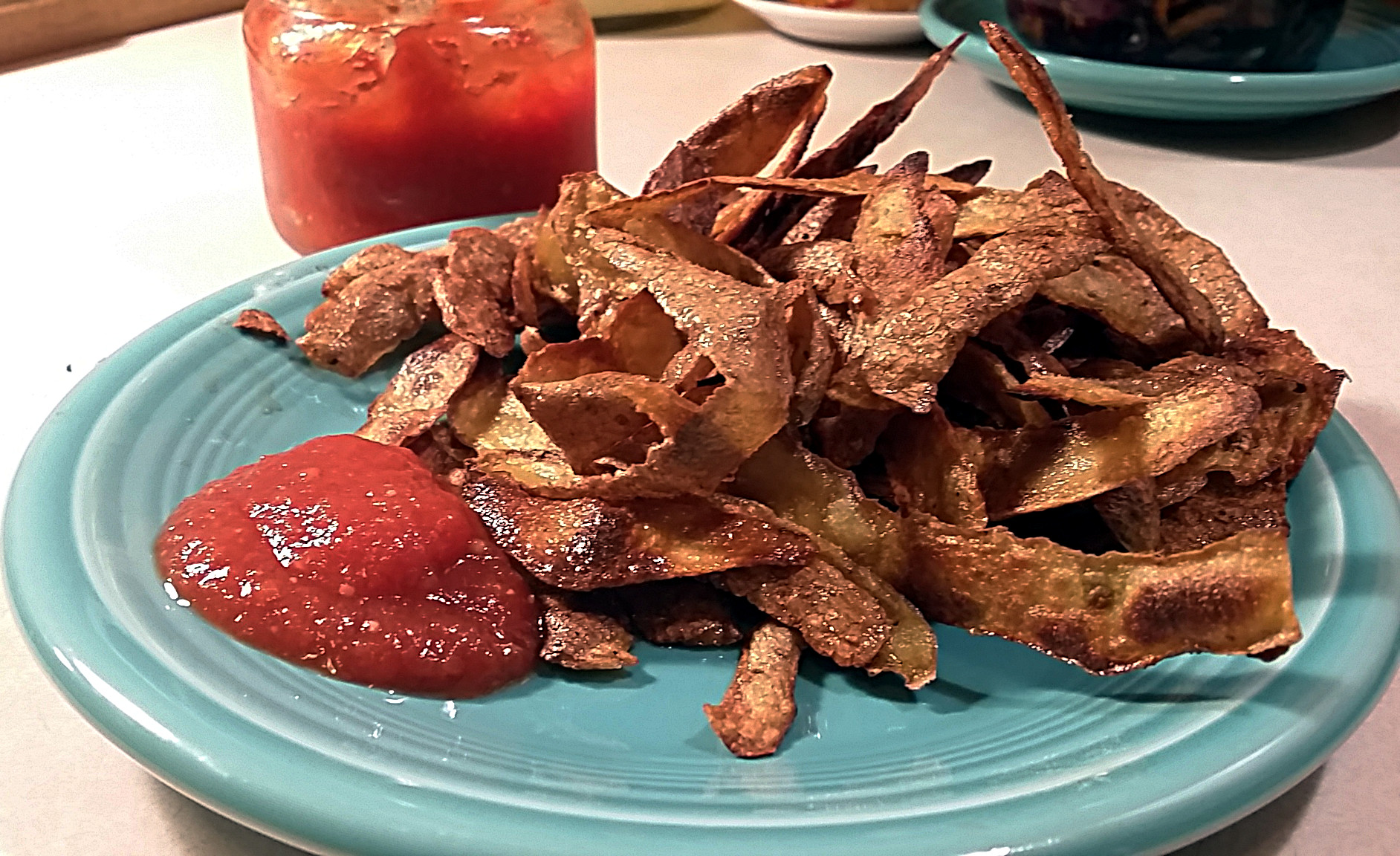Even though the potato skin can be eaten and contains lots of good things, it is often customary to remove them before cooking the potato. For some, it’s a matter of texture or taste and others are wary of chemicals that might be on the skin. If this is part of your (bad) habits, you will be happy to learn that these peels can still serve you in an intelligent way and that in addition, their contribution of iron, calcium, potassium and fiber can help you serve many purposes! So here are our best tips for using potato peels.
After the uses of onion skin, garlic skin, avocado skin or banana peels, it is only fair to talk about those of potatoes.
How to use potato peels?

Beauty and health uses of potato peels
Put a thick peel on a minor burn to treat it. Renew the peel frequently.
Use peels on sunburned skin. Starch soothes sunburn, redness or burns.
Reduce your pimples or dark circles by applying peels for a few minutes.
Uses at home or in the garden
Clean the inside of stainless steel equipment with a peel. That makes stainless steel shine effectively!
Put very clean peels in your frying oil for a few minutes then filter through a strainer. The oil will be cleaned and deodorized.
Sprouted peels can be used to growing potatoes and chase the Colorado beetles out of the garden.
Use them as fertilizer to encourage plant growth. Just place them at the base of your plants.
Some people feed them raw to their chickens or dogs (cooked with other foods), other people don’t for fear of there being chemicals on the skin. It’s up to you!
And finally, our favorite and foodie’s favorite way to use potato peels:

Prepare spicy, crispy and tasty peel chips! To make potato peel chips, wash the peels thoroughly to remove any dirt. Dry them well, then mix them with a little olive oil, salt or fleur de sel, pepper and, if desired, spices such as paprika or garlic powder. Then spread them on a baking tray lined with parchment paper and bake them in the oven at 200°C for 10 to 15 minutes, until golden and crispy. Above all, watch the cooking carefully so as not to let them burn. Finally, serve.
Besides potatoes, many peels can be recycled!

Many vegetable peels can be recycled in creative, delicious and useful ways, just like potato peels. This type of recycling not only allows us to reduce food waste, but also to discover new flavors and uses in the kitchen! Here are some examples:
–Carrot skins can first be added to broths to add flavor or used to make crunchy chips. These peelings are rich in nutrients and can therefore be added to compost to enrich the soil and make fertilizer.
–Onion skins add flavor and color to your broths and soups. Simply remove them before serving. It can also be used to naturally dye fabric or eggs. This gives a beautiful golden to brown tint.
–Zucchini peels can be cut or finely grated to add a crunchy and colorful touch to salads. And as with carrots, these skins can also be dried in the oven to make chips.
–Beet peels They can also be roasted or dried in the oven to make crunchy and colorful chips. You can also use them as a natural dye to dye fabrics or foods like eggs or rice.
–Cucumber skininfused in water, will create a refreshing and hydrating toner for the face. It also serves as a natural garden repellent. Furthermore, it adds nutrients and freshness to smoothies or salads.
–Radish peel can be preserved in vinegar to obtain crunchy and tangy pickles or added to salads for a crunchy texture.
-Finally, we can put leek peel in the composting bin to enrich the humus or add to broths to give flavor.


